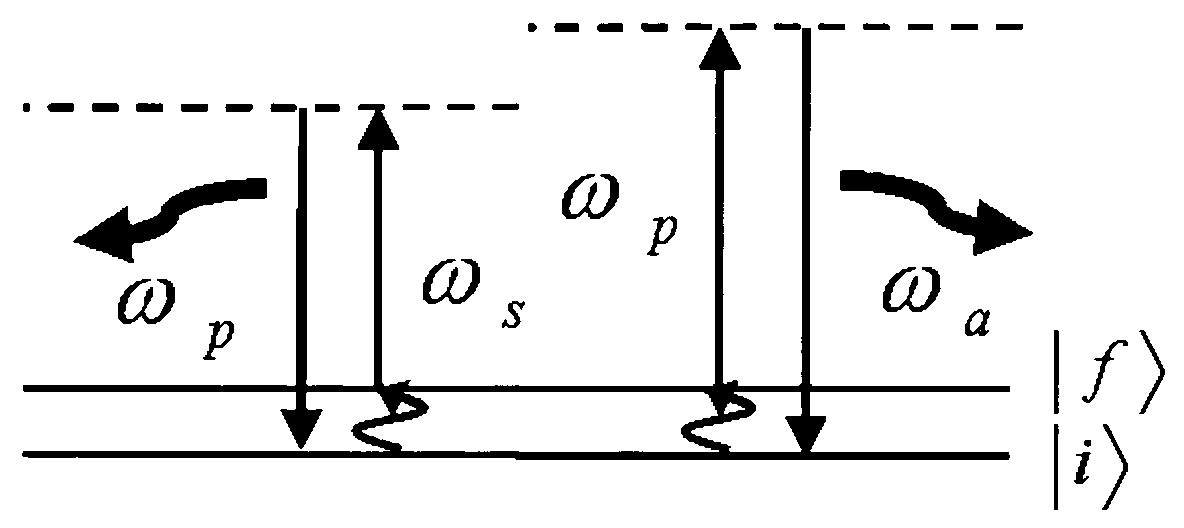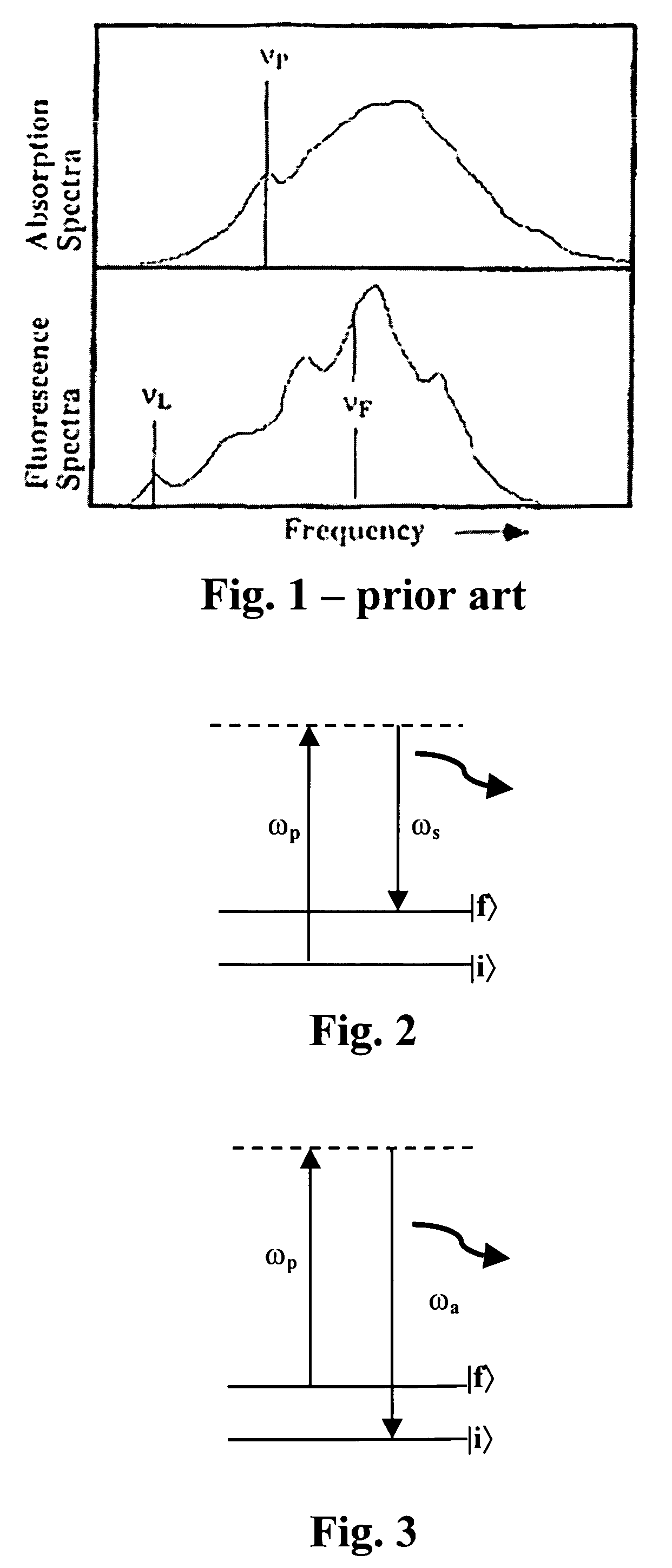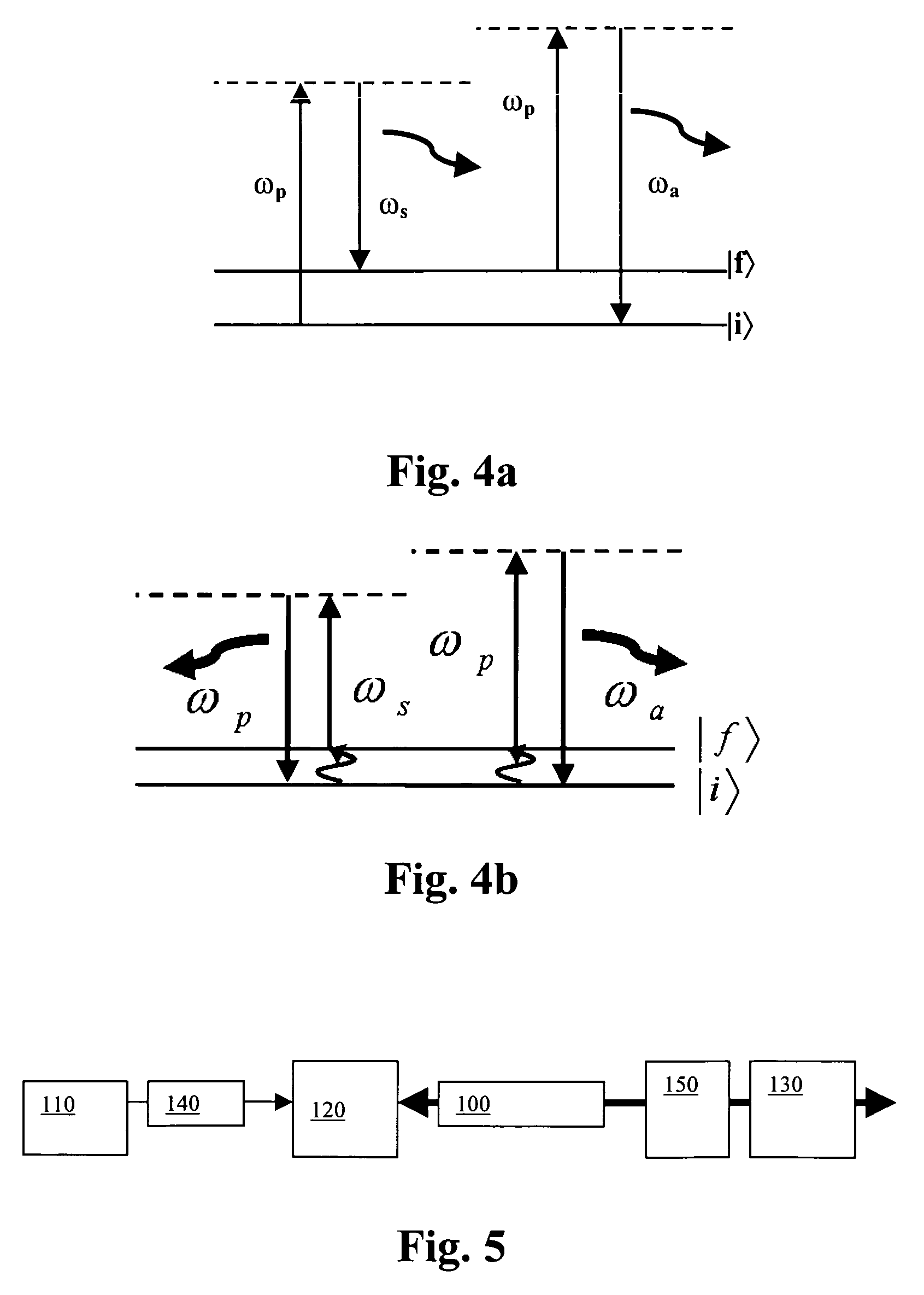Cooling an active medium using raman scattering
a technology of active medium and scattering, which is applied in the field of active medium systems, can solve the problems of heat generation, energy loss, and inability to achieve 100 percent effective coherent radiation generation process in optically pumped laser systems, and achieves the effects of reducing unwanted heat generation in the active medium-based system, reducing energy loss, and improving efficiency
- Summary
- Abstract
- Description
- Claims
- Application Information
AI Technical Summary
Benefits of technology
Problems solved by technology
Method used
Image
Examples
first embodiment
[0075]In the first aspect, the invention thus relates to methods for setting up thermally controlled active-medium-based systems, thermally controlled by the use of radiative cooling based on Raman scattering processes. In other words, the thermal status of the active-medium-based system is controlled by reducing or preventing heating of the active medium or by extracting heat from the medium, which loses the corresponding energy by generating, e.g. emitting radiation. The radiative cooling mechanism is based on optimising the extraction of anti-Stokes Raman scattered photons as a function of the extraction of Stokes Raman scattered photons. In the present embodiment, this optimisation is performed by adapting ‘external’ parameters of an active-medium-based system, i.e. the parameters of the system that are not directly related to the medium e.g. parameters related to the system and the environment of the active medium.
[0076]The method for setting up thermally controlled active-medi...
second embodiment
[0081]In a second embodiment according to the first aspect, the invention relates to methods for setting up thermally controlled active-medium-based systems, by the use of radiative cooling. In other words, the thermal status of the active medium-based-system is controlled by reducing or preventing heating of the active medium or by extracting heat from the medium, which loses the corresponding energy by generating, e.g. emitting radiation. The radiative cooling mechanism is based on optimising the extraction of anti-Stokes Raman scattered photons as a function of the extraction of Stokes Raman scattered photons. In the present embodiment, this optimisation is performed by adapting ‘internal’ parameters of an active-medium-based system, i.e. the parameters of the system that are directly related to the medium. The method for setting up thermally controlled active-medium-based systems may comprise the step of tailoring the efficiencies of Raman scattering processes. Tailoring the eff...
PUM
 Login to View More
Login to View More Abstract
Description
Claims
Application Information
 Login to View More
Login to View More - R&D
- Intellectual Property
- Life Sciences
- Materials
- Tech Scout
- Unparalleled Data Quality
- Higher Quality Content
- 60% Fewer Hallucinations
Browse by: Latest US Patents, China's latest patents, Technical Efficacy Thesaurus, Application Domain, Technology Topic, Popular Technical Reports.
© 2025 PatSnap. All rights reserved.Legal|Privacy policy|Modern Slavery Act Transparency Statement|Sitemap|About US| Contact US: help@patsnap.com



